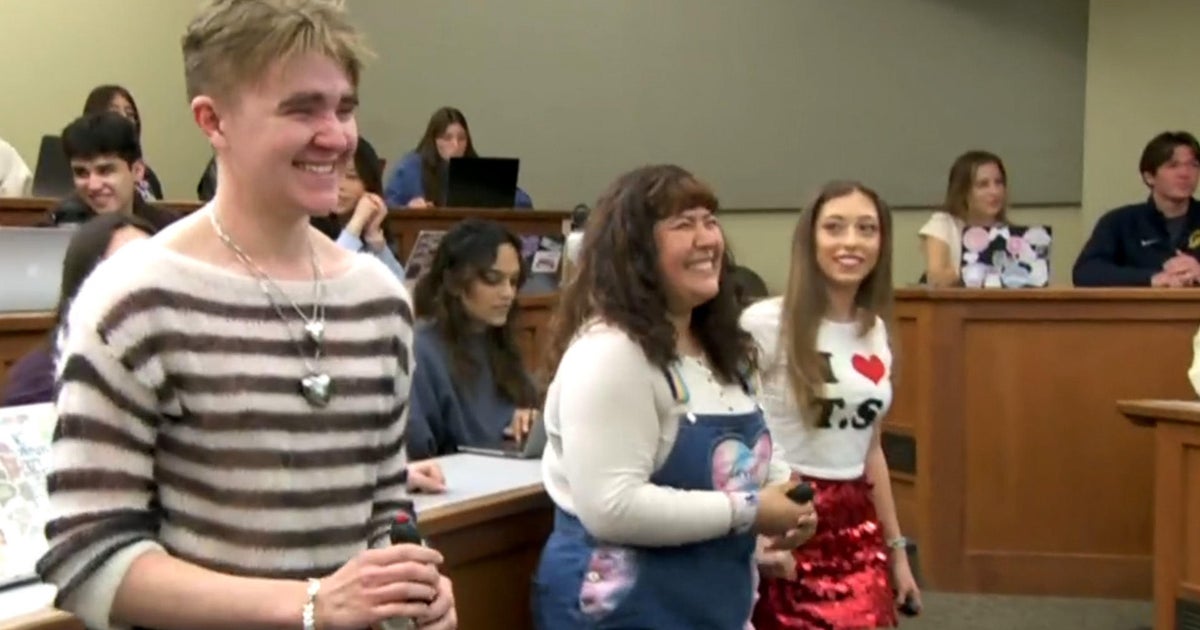Amid concerns of terror attacks and mass shootings, students learn life-saving trauma techniques
The Boston Marathon attack six years ago today inspired a government-sponsored program that turns bystanders into first responders. The Stop the Bleed program is also now being taught at some schools.
It was less than 20 years ago that doctors started teaching CPR to civilians. Now doctors hope to make trauma training just as common, reports CBS News correspondent Don Dahler. With growing concerns over terror attacks and deadly mass shootings, doctors are equipping regular people, even students, with life-saving skills.
Trained nurses showed students at Plymouth public schools how to apply the right amount of pressure against a wound and to use tourniquets to stop bleeding.
"If you ever were in a situation like that in a trauma, most of us can agree like we'd probably freak out, but this gave you a little more sense of confidence," student Kathryn Spiegel said.
A person could bleed to death in a matter of minutes – precious time that can't be wasted waiting on first responders
"The instructors also mentioned that like at one point, adrenaline is going to kick in and you're just going to have to just get down to like, you know how to do this, trust yourself," Reilly Hanson said.
And that's the point of this training. So in the event of an accident or an act of violence like a school shooting, students can perform these lifesaving functions quickly.
Dr. Reza Askari and Dr. Eric Goralnick are leading this Stop the Bleed class.
"If we can educate them, we can then empower them," Askari said.
"This is sort of where CPR was 40 years ago, right, instead of a heart attack this is life threatening bleeding," Goralnick said.
They were among the doctors at Boston's Brigham and Women's Hospital who embraced the program after tragedy struck their hometown six years ago.
"The tipping point for us really in Boston was the marathon bombing and that demonstrated to us that the public wants to help," Goralnick said.
Three people died from the more than 200 who were injured. Experts credit bystanders and civilians who first came to the rescue. It was part of the discussion at this stop the bleed conference back in February.
"My story begins when my family was standing at the finish line of the Boston Marathon on that fateful day April 2013," Audrey Epstein Reny said. Her 18-year-old daughter, Gillian, almost lost her life when the bombs went off. "Those first few chaotic moments, a first responder at the scene rushed to our aid, took off his belt, grabbed my husband's belt and assisted in putting tourniquets on both of her legs."
Since trauma is the number one cause of death for those under the age of 45, Plymouth public schools superintendent Gary Maestas felt the program was important for his students.
"Our kids will be prepared for whatever they come in touch with," Maestas said.
"Including mass shootings?" Dahler asked.
"Absolutely. Absolutely. I think that's a given," he responded.
Asked whether there's a risk of some of the students being traumatized by the training, Maestas responded, "I think the students that are in the programs that we have and we offer, they have a great deal of understanding of the medical fields that they are going to be part of."
The doctors conducting this training told us the ultimate goal is to see this program rolled out in schools nationwide -- to provide schools with these tourniquets so they have those if they were to ever need it, regardless of the type of injury or medical condition.



